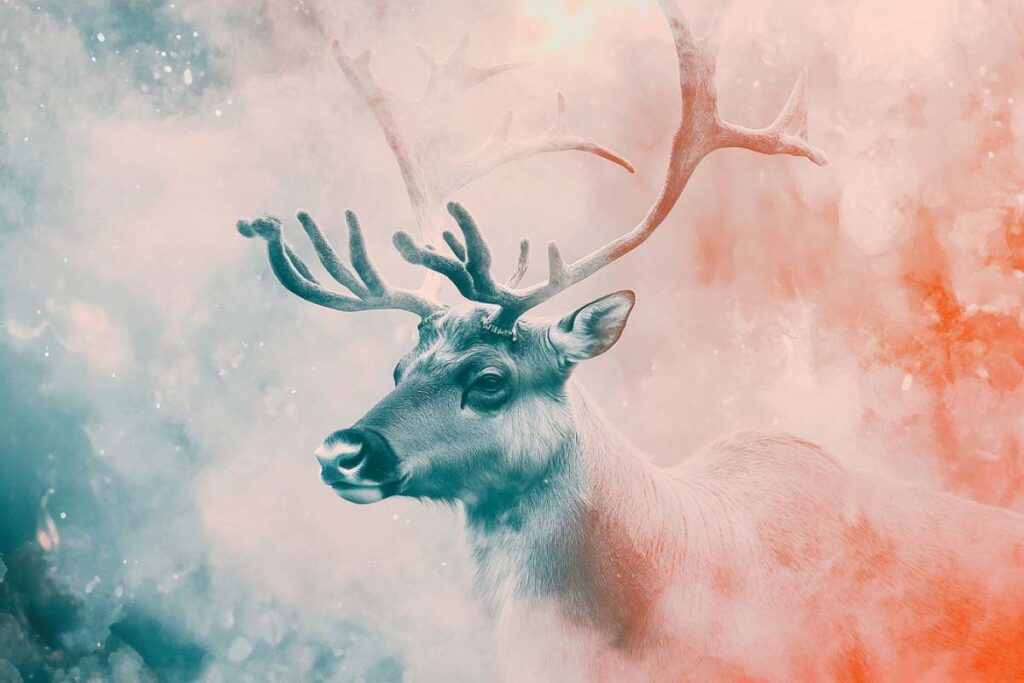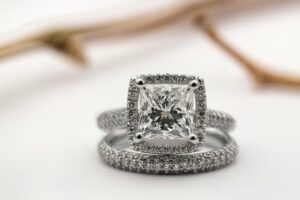
Paintings of watercolor reindeer have a certain allure that seems to transport a bit of the winter wonderland into your house. With delicate brushstrokes and subtle washes that bring the image to life, these paintings frequently convey the animal’s beautiful presence and compassionate soul. Each beautiful watercolor reindeer is the result of a number of creative decisions and techniques that contribute to the overall enchantment. Let’s examine more closely what makes these paintings so captivating and unforgettable.
The Role of Transparency in Watercolors
Transparency is one of the essential characteristics that characterize watercolor painting. Because of the medium’s ability to let light through paint layers, the subject gains depth and vitality from the glowing effect. This transparency contributes to the delicate texture of the fur and antlers of watercolor reindeer. Thin pigment washes are frequently used by the artist to progressively add color, letting areas of the paper show through and simulating the softness of the animal’s coat.
Using Wet-on-Wet for Soft Blends
Wet-on-wet is a technique commonly used in these paintings. This entails putting wet paint on a damp surface, which causes the colors to blend and blend together. The soft, hazy backgrounds that are frequently seen around painted reindeer are ideal for this technique. Additionally, it aids in gently blurring edges, creating the illusion of a natural setting free of sharp edges, giving the animal a sense of inclusion rather than a cutout.
Layering to Add Dimension
Layering is yet another crucial method. To enhance color intensity and detail, artists apply additional paint in succeeding layers after a first light wash dries. With this method, texture and form are gradually added. Layering can enhance the animal’s body’s highlights and shadows in watercolor reindeer paintings, highlighting the antlers’ glint or muscle tone. A three-dimensional appearance is produced by the deliberate balancing of light and dark regions.
Dry Brush for Texture
A dry brush impression can occasionally be produced when the paintbrush isn’t loaded with enough water. The paper is left with broken, scratchy strokes from this technique, which might resemble the rough texture of tree bark or fur. Dry brushstrokes are frequently used in watercolor reindeer artwork to draw attention to the rough edges of the antlers or the hair flick around the neck and legs. These brushstrokes give the picture personality and enhance its touch and visual appeal.
Minimalist Color Palette for Impact
Many watercolor reindeer pieces feature a limited range of colors. A minimalist palette can heighten the painting’s emotional impact by focusing attention on form and movement rather than a riot of hues. Earth tones like browns, grays, and soft greens are commonly used to reflect the natural habitat of reindeer. A subtle touch of blue or white can suggest cold air or snow, contributing to the overall atmosphere without distracting from the subject.
The Importance of Negative Space
Negative space — the empty area around and between the subject — plays a surprising role in watercolor art. Artists often leave parts of the paper untouched to create contrast and balance within the composition. Around a watercolor reindeer, leaving white or lightly colored space helps the animal stand out, providing breathing room that enhances the feeling of calm and quiet. This technique also allows the viewer’s imagination to fill in details, making the piece more engaging.
Soft Edges vs. Hard Edges
The choice between soft and hard edges changes how the viewer’s eye moves across the painting. Soft edges suggest distance or softness, while hard edges bring focus and clarity. In watercolor reindeer paintings, soft edges around the body or background often contrast with sharper lines in key areas, like the eyes or antlers. This contrast directs attention to the animal’s face, creating an emotional connection with the viewer.
Adding Fine Details Last
Fine details, such as the glint in an eye or the texture of the nose, usually come at the very end of the painting process. These tiny touches make the image feel complete and alive. Since watercolor can be unpredictable, artists often save detailed work for when the main forms are dry and settled. In watercolor reindeer art, details help to convey personality and bring out the unique features of the animal.
Paper Quality and Its Effects
The kind of paper used also influences the final look. Watercolor paper with a textured surface, called cold press, can add interesting grain to the painting. Smooth paper, or hot press, allows for sharper details but less texture. For watercolor reindeer, artists often choose paper that holds water well and shows subtle granulation, enhancing the natural, organic feel of the artwork.
The Balance of Spontaneity and Control
Watercolor requires a delicate balance between letting the paint flow freely and guiding it carefully. This tension is part of what makes watercolor reindeer paintings feel alive. Artists may start with loose shapes and soft washes, then slowly add structure and details. This mix of spontaneity and control creates a sense of movement and vitality, capturing the essence of the reindeer without overworking the image.
Final Thought:
Transparent layers, soft blends, and careful details combine to create the allure of watercolor reindeer. Careful use of color and space creates ambiance, while each brushstroke adds to the animal’s gentleness and character. The observer is urged to stop and experience a peaceful connection with nature by these paintings. Watercolor reindeer have a distinct position among animal art because of its subtlety and simplicity, which serve as a reminder that beauty can often be found in the little things.



